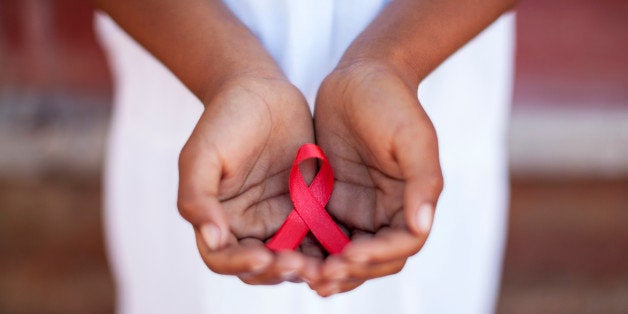
It's been almost forty years since the first case of HIV/AIDS was discovered, and yet teenagers and millennials in the US have never known a world without AIDS. They live during a time where it is a treatable disease, people are living longer and suffer fewer complications. As a result, there's a lack of urgency and more complacency than ever before. The decrease in comprehensive sex education programs in schools have contributed to an increasing number of youth living with HIV in the US, many of whom do not know that they are infected. The new infections are concentrated in LGBTQ youth and heterosexual young women of color between the ages of 13-24. A disproportionate number of Black or Latino gay and bisexual men are particularly affected. I won't bore you with all of the statistics, but let me put it into context for you. In 2013, approximately 9,961 youth were diagnosed with HIV infection, representing 21% of an estimated 47,352 people diagnosed in the US. Eighty-one percent (8,053) of these diagnoses occurred in those aged 20 to 24--the highest number of HIV diagnoses of any age group. In 2013, approximately 2,704 youth were diagnosed with AIDS, representing 10% of the 26,688 people diagnosed with AIDS that year. These disturbing trends particularly among black gay and bisexual men indicated a 48% increase in new infections between 2006 and 2009. The rate of new HIV cases among black MSM under the age of 30 is three times higher than white men--indicating that there is a need to sound the alarm on HIV related cases in health disparities (CDC, 2014).
The reasons driving the spread of HIV consist of complex biological and psychosocial factors that include: low perception of risk, testing, and condom use as a result of declining school health programs, sexual activity at a young age with older partners, etc. But there is one factor that people have yet to talk about: The lack of health care providers of color.
In the twenty years that I've worked in HIV/AIDS, I've seen the number of providers who are black and brown decrease significantly. Perhaps its due to the six figure debt due to medical school, social work, nursing and public health programs that have us go into more lucrative areas of the field instead of community health and primary care. Or maybe it has to do with the number of minority organizations that have had to close their doors due to lack of resources. But one thing is for sure, we will not have an impact on this epidemic if there are not more Black providers to care for the disproportionate number of people with HIV that look like them. The reason why is because Black people go to people who look like them. There is an inherent distrust in the medical system that dates back to the Tuskegee Syphilis experiment and continues today due to a lack of cultural sensitivity. Non-Black providers don't understand the cultural, spiritual and psychological issues that Black patients face. The stigma associated with being Black and gay, a church that preaches that the disease is from the devil and a community that believes the disease was created to destroy Black people. We have a dearth of black providers advising organizations of how they can sustain their programs to support people living with HIV. Instead we have a select group of people that believes that what worked in the White gay community, will work in the Black community.
It is fitting that in the context of the Black Lives Matter Movement we look at the health of Black people. We have to look at how we can diversify the health care field so that there are more black doctors, nurses, social workers, psychologists, and other public health providers. Xavier, a Historically Black College, is producing more physicians than any other school in the nation. But this is not enough. There needs to be a pipeline in black communities that educates and prepares black minds for the health care sciences. Without it we will continue to see the number of Black HIV cases increase, particularly among young people. Donnie Hathaway said we are young, gifted and Black, but without more Black providers we will be young, Black and dying.